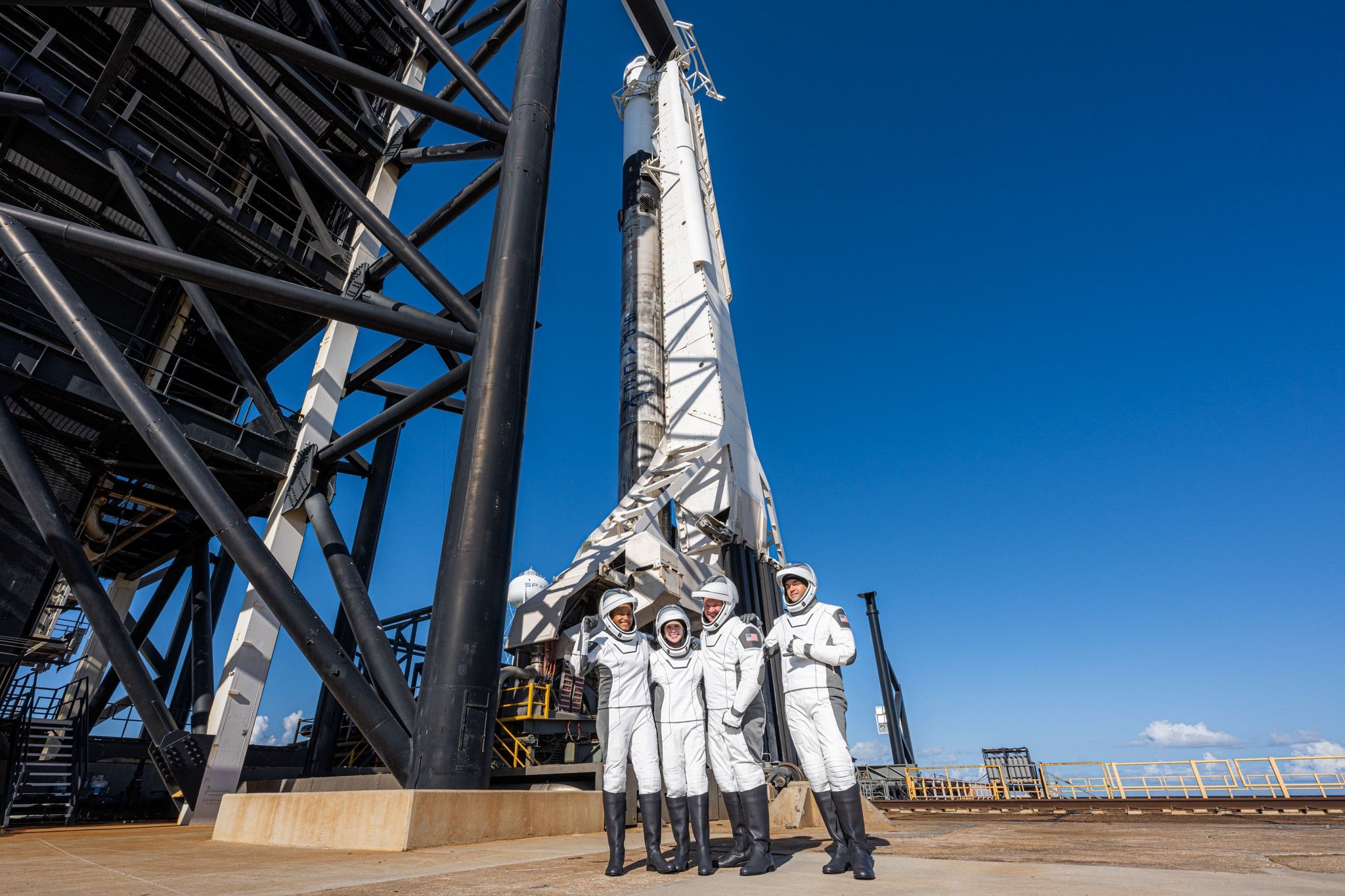After launching on Wednesday evening, the Inspiration4 crew aboard SpaceX‘s Crew Dragon spacecraft safely reached orbit.
The Inspiration4 crew, consisting of four regular people, rode out from Kennedy Space Center, Merrit Island aboard a SpaceX Dragon capsule. SpaceX said that the Dragon Capsule split from the Falcon 9 rocket 19 minutes after departure.
Also Read: SpaceX launch: All about Inspiration4’s civilian crew
The crew will free-fly around the Earth, aiming for an
altitude of 575 kilometres (360 miles). It corresponds to 150 kilometres above
the orbiting laboratory, which is about the same altitude as the Hubble Space
Telescope’s perspective of the cosmos.
The group – Jared Isaacman, Hayley Arceneaux, Sian
Proctor, and Chris Sembroski — will spend three days in orbit before returning
to Earth, with the Crew Dragon capsule “Resilience” splashing down
off the Florida coast.
According to a statement released by SpaceX earlier today,
the spaceflight trip to orbit will participate in a “first-of-its-kind
health research initiative to increase humanity’s knowledge on the impact of
spaceflight on the human body.”
Also Read: SpaceX launch: Purpose of ‘Inspiration4’ mission in a nutshell
Explaining the process, the statement read: ”
SpaceX, the Translational Research Institute for Space Health (TRISH) at Baylor
College of Medicine and investigators at Weill Cornell Medicine will collect
environmental and biomedical data and biological samples from Inspiration4’s
four crew members before, during, and after this historic spaceflight.”
Moreover, the crew will record ECG activity, movement,
sleep, heart rate and rhythm, blood oxygen saturation, cabin noise, and light
intensity during the trip.
Changes in behavioural and cognitive performance should also
be measured or assessed. The crew’s organs will be examined, and blood samples
will be taken and analyzed.
Also Read: Difference between space flights of Branson, Bezos and Musk
This is SpaceX‘s fourth crewed mission, but it is the first
without personnel from NASA and foreign partners. At least one experienced
astronaut has accompanied all prior orbital space tourism flights (and planned
such missions with stated crews) to assist the guests through the drama of
launch, microgravity, and landing.







